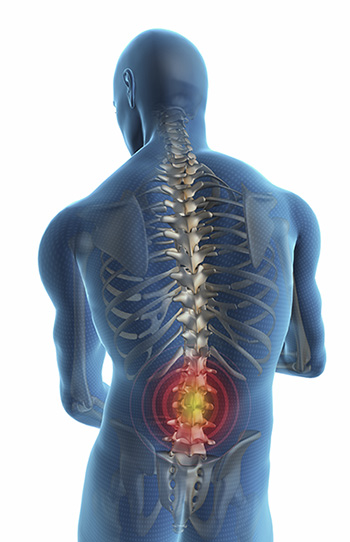 The PMID is the basic concept on which pivots Orthopedic Manual Medicine: When tensions are exercised surpassing the adapting mechanisms of spine, compromises its function globally at any of the vertebral segments, resulting in a DDIM.
The PMID is the basic concept on which pivots Orthopedic Manual Medicine: When tensions are exercised surpassing the adapting mechanisms of spine, compromises its function globally at any of the vertebral segments, resulting in a DDIM.
As a result, the spinal nerve is irritated, triggering what Professor Robert Maigne described as ” The cellulo – Teno – myalgic Syndrome “: chronic inflammatory processes which involve neuropathic and vascular phenomena that develop in a very precise topography, but goes far beyond the classic dermatome.
At the level of muscles, tendons and fascias, it is clear that the disease occurs in those who are innervated by the spinal nerve committed in the intervertebral dysfunction.
This teno-suffering myofascial complex altered suffers stages of inflammation, ending in a fibrosis scar with movement restriction. Appear so, spontaneously painful areas or touch, in well determined areas: these are the Taut Bands. The result is a pathological muscle hypertonia that has direct impact on the spinal segment, thus maintaining the functional imbalance.
In addition, the local mechanical stress over the immobility of the tissue and the inflammatory process in an area rich in nerve endings generates ideal conditions for the dysfunction of the neuromuscular junction and the consequent formation of Trigger Points. These are an added disease, generating irritating painful stimuli that feedbacks reflexively the intervertebral dysfunction.
This completes the neurological myofascial syndrome. In the evolution of the process, come into play muscle chains groups agonists and antagonists that will trigger new segmental dysfunction, further complicating the clinical picture of the patient.

